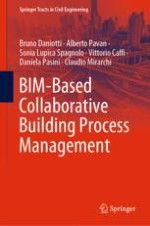2020 | OriginalPaper | Chapter
7. Benefits and Challenges Using BIM for Operation and Maintenance
Authors : Bruno Daniotti, Alberto Pavan, Sonia Lupica Spagnolo, Vittorio Caffi, Daniela Pasini, Claudio Mirarchi
Published in: BIM-Based Collaborative Building Process Management
Publisher: Springer International Publishing
Activate our intelligent search to find suitable subject content or patents.
Select sections of text to find matching patents with Artificial Intelligence. powered by
Select sections of text to find additional relevant content using AI-assisted search. powered by
